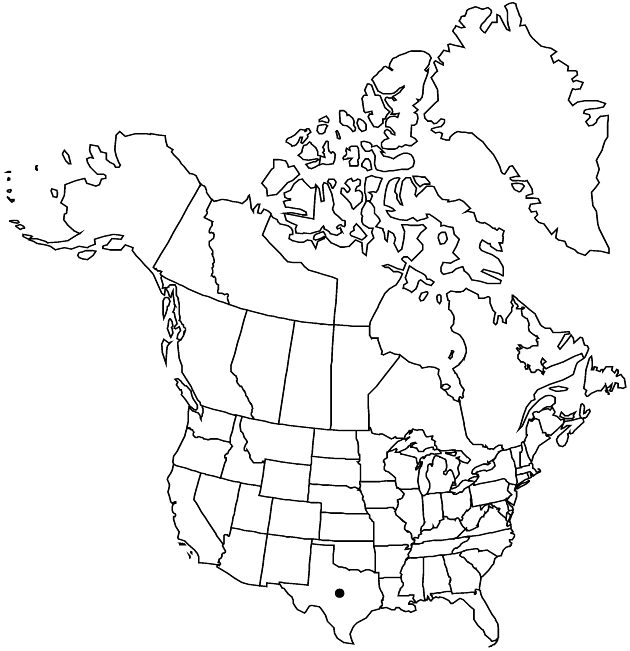Rayjacksonia aurea
Amer. J. Bot. 83: 369. 1996.
Common names: Houston camphor-daisy
EndemicConservation concern
Basionym: Haplopappus aureus A. Gray Mem. Amer. Acad. Arts, n. s. 4: 76. 1849 (as Aplopappus)
Synonyms: Machaeranthera aurea (A. Gray) Shinners
Treatment appears in FNA Volume 20. Treatment on page 438.
Revision as of 19:55, 29 July 2020 by imported>Volume Importer
Annuals, 20–100 cm, herbaceous. Leaf-blades linear to linear-oblanceolate, midcauline 1–3 (–4) mm wide. Heads on short, sometimes bracteate peduncles, not surpassed by distal leaves. Involucres 4–7 × 10–15 mm. Phyllaries in 4–5 series, tightly appressed, strongly unequal, apices erect to slightly spreading, ca. 1 mm wide, herbaceous. Ray-florets 14–19; corollas 6.5–9.5 mm. Disc-florets: corolla-tubes ± equaling limbs. 2n = 12.
Phenology: Flowering Oct–Nov(–Dec).
Habitat: Sand or sandy loam, fields, pastures, usually relatively bare sites
Elevation: 0–10 m
Discussion
Of conservation concern.
Rayjacksonia aurea is now restricted to a few, small populations in the vicinity of Houston. It is in the Center for Plant Conservation’s National Collection of Endangered Plants.
Selected References
None.
Lower Taxa
None.
... more about "Rayjacksonia aurea"
introrse +
connate +
distinct +
herbaceous +
scarious +
hirsute +
papillate +
continuous +
decurrent +
1-nerved +
linear;oblanceolate +
ribbed +
stigmatic +
barbellate +
brownish +
persistent +
30;40 +
unequal +
absent +
Houston camphor-daisy +
yellow +
absent +
monomorphic +
dimorphic +
5-9-ribbed +
staminate +
compressed;broadly ellipsoid;clavate +
Tex. +
straight +
distinct +
proximal +
1;5 +
bisexual +
dispersed +
singly +
indeterminate +
thick-flattened +
surrounding +
hemispheric +
linear;linear-oblanceolate +
alternate +
cauline +
equaling +
erect +
triangular +
scarious +
terete +
thinner +
2-carpellate +
inferior +
attached +
anatropous +
persistent +
bracteate +
tough +
thick +
absent +
connate +
persistent +
appressed +
distinct +
falling +
unequal +
Amer. J. Bot. +
1996 +
pistillate +
absent +
fertile +
0-4-ribbed +
epaleate +
pitted +
convex +
fibrous +
exalbuminous +
modifed +
4;5 +
alternate +
branched +
deltate +
2-branched +
glabrous +
Rayjacksonia aurea +
Rayjacksonia +
species +
ampliate +
1-nerved +
white-indurate +
equal +
shorter +
annual +
herbaceous +
